 William Smith 1870-1926 and
William Smith 1870-1926 and
Agnes William Smith 1878-1960 
One of the major tourist attractions in Malaysia is a “ruin” called “Kellie’s Castle” - a relic of the ambitions of a Morayshire man who is almost forgotten in his own home area.
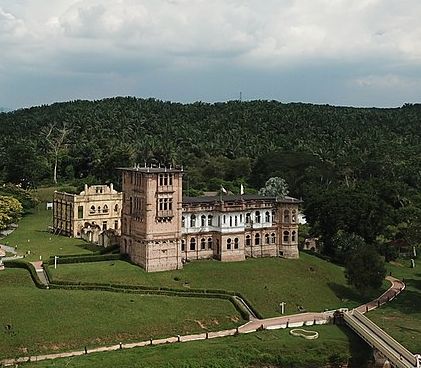
This is not a ruin at all but an unfinished building. It shows an eclectic mix of architecture. Its resilient brickwork, said to be bonded by a medieval mortar recipe involving egg whites and lime, managed to withstand even some WWII bombs. Its strangeness and obviously grandiose statement has attracted some imaginative theories to match its mystery.
Was this to be a Malayan Taj Mahal? It was already partially white-limed.
Is it haunted by uneasy ghosts? Why is there such a fantasia of styles in its construction? Why was it abandoned?
It probably attracts so many visitors in part because it allows people to project on to it their own fantasies or to demonstrate their architectural knowledge and their camera skills?
What is the story behind it?
Without wishing in any way to diminish its value today as a money-spinner for the Malaysian tourist economy let’s try to delve a little further into another of our Morayshire Malayan love affairs.
For those who enjoy mysteries there will still be plenty left to engage the speculative imagination.
William
William “Kellie” Smith was born on 1 March 1870 at Easter Kellas farm near the village of Dallas in Morayshire.
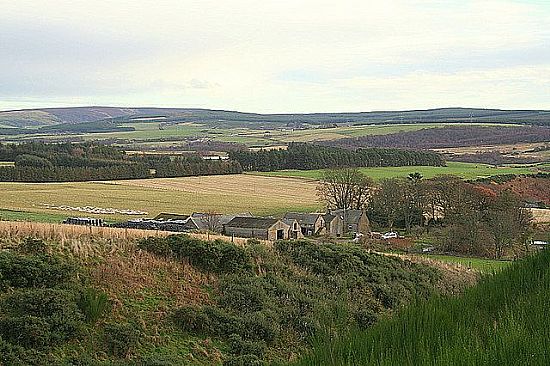
Photo of Easter Kellas Farm by Des Colhoun for Geograph.org
The farm was, for its time and region, a good-sized one and was rented by William Smith senior who had been born at Stonewells farm in the village of Urquhart. The landlord for both farms was the Earl of Fife whose home was Duff House in Banffshire.

A delightful early photo of the village of Urquhart
William senior was the only son of the family of Alexander Smith and Mary Ann Murdoch who survived childhood and so he was singularly important.
After leaving Elgin Academy he was apprenticed to a land surveyor, George McWilliam of Sheriffston near Lhanbryde. His professional training thus brought him into direct line of succession through George McWilliam via George Brown to Peter May. May and Brown were the two most distinguished surveyors in this part of Scotland whose estate plans are still very valuable sources of detailed information for this area.
Because George Brown had taken May’s advice about thrift he left £17,526.14s.3&1/2d at his death in 1816 that his son, Peter, inherited. Peter Brown, who farmed at Linkwood, proved to be more interested in improving his stock and farming methods than in surveying. So, the surveying side of the Browns' work went to George McWilliam.
William Smith senior would certainly have hoped to leave a similar legacy but he lived a generation later and times had changed. He may not have shared George Brown’s thrift either.
Farming was in a state of radical change with amalgamations of the smaller farms to the benefit of the larger ones and a shift from traditional cattle rearing to more arable farming in this area. This still meant plenty of work for a surveyor and valuer along with that of an auctioneer at roups (on-site sales of all the moveable goods) as farms changed hands.
Helen Kellie also came from a farming background. She was born 4 October 1841 in Alves to James Kellie and Janet Adam. James "Kelley" was in Lachlanwells farm according to the 1868-78 Post Office Directory. This must have been Helen's brother as their father James had died in 1857.
It was at Alves, anyway, that Helen Kellie married William Smith senior on 28 June 1866 with the blessing of the Reverend James Mackie.

A location map for the places mentioned in this part of Scotland.
Whether William junior and Alexander Grant Mackie knew one another because of their Alves connections it is not possible to know now. There was 12 years difference in their ages. It is, however, probable. They certainly teamed up at one point in Perak.
The Post Office Directory for 1863 lists Thomas Allan in Easter Kellas but The Inverness Courier 21 Jan 1864 reports the sale at Elgin Cattle Market by Mr W. Smith, East Kellas of 10 queys [heifers] at £4.12s.6d and another lot for £7 each. There may well have been dual occupancy still on an “unimproved” farm or there could have been a change of occupancy at precisely at this time.
Surveyors still ran farms for their basic income. Although William senior’s farm was at Easter Kellas when William junior was born he moved about as better leases became available. His obituary in The Elgin Courant 1902 explains:-
“At the same time he acted as a valuator, auctioneer and surveyor, and previous to the introduction of the Auction Marts he carried on an exceptionally large auctioneering business. He was tenant of the farm of Pans, near Elgin [now completely obliterated by Tyock industrial estate], for about twelve years, and only went to the farm of Longmorn in May last” [i.e.in1901].
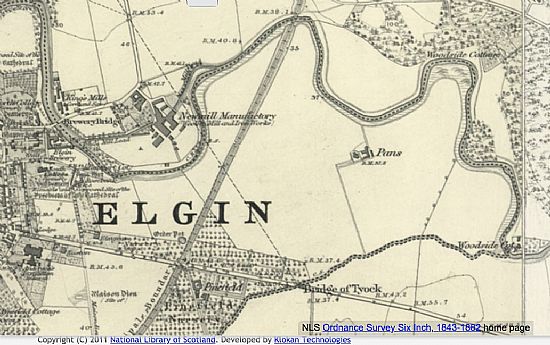
The farm of Pans is clearly marked on this old O.S. Map of Elgin. It is bounded by the meander bends of the Lossie. The last remnant of the Cathedral precinct wall and the old Pansport (entry gate) are shown just above and to the left of the E of Elgin.
The inventory of William senior’s estate presented in 1902 shows that the farm had latterly been producing grain and that the account of his assets and debts would leave Helen unburdened but by no means wealthy. She eventually died, however, in a substantial Victorian villa on Ormidale Terrace in the West End of Edinburgh in 1914. This was, at that time, the home of her daughter Ella and her husband David Peebles. This couple had been married in Elgin in 1910. David Peebles is perhaps remembered in Edinburgh only as a vital witness in a strange case of poisoning in the King family of Wester Coates Terrace in 1924. Some people round here, however, still remember Peebles, the Chemist's shop in Elgin. Both Ella and David died in Elgin at a house in Rose Avenue.
The 1871 census showed William and Helen comfortably established at Easter Kellas with three boys Alexander 3, James 2 and William 1. The family was complemented by 5 male and 2 female staff to run the house and farm.
By the time of the next census however the family was living at 21, Academy Street in Elgin.

21, Academy Street, Elgin
William may still have had some interest in the Kellas farm but he was developing his business as an auctioneer and surveyor. William junior was eleven and one boy and four more girls had extended the Smith family, including Ella. The family had grown but there was now only one female servant to cope in the house.
In 1891 the family had moved yet again to Lhanbryde. Only the 15 year-old Eveline and 13 year-old Ella remained at home but there were now 4 servants, 1 male and 3 female so the house they were in was substantial and we must presume that business was good.
William junior had left Scotland the year before in 1890 and headed for Malaya. There is at present no knowledge of who or what was the instigator of this move.
The fluctuations of his family’s wealth and constant movement may well have created the thirst for land possession (as a mark of security and status) in young William that he was to demonstrate so blatantly in Malaya.
So far nothing has been discovered about the education of William Smith junior. He had probably followed in his father’s footsteps at Elgin Academy and would undoubtedly have learned from his father something about surveying but, when he headed to Malaya in 1890, he calls himself more generally a “civil engineer”.
There, he certainly joined a thriving surveyor’s business run by Charles Baker. Baker was an enterprising New Zealander who had won concessions from the State government to clear 9,000 hectares of forest in Batu Gajah.
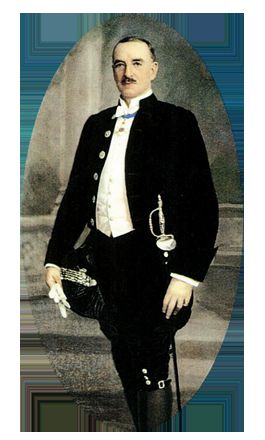
Charles Alma Baker courtesy of the Charles Alma Baker Trust
William began well and made enough money to buy his first 405 ha (1,000 acres) for himself. It would form the core of his “Kinta Kellas Estate”. Both surveyors were highly ambitious and this soon created intense business and social rivalry between them. Both would add a middle name to their birth names to create a double-barrelled surname. Charles became Charles Alma (after the Crimean battle of) Baker and Smith added his mother’s name to become William Kellie Smith.
In 1894 The Perak Pioneer reported:
Mr W. Smith has left the Government Service and joined Mr A.G. Mackie in his business as a road contractor. Mr Mackie has commenced work on a new cart road from Batu Gajah to Gopeng.
This business partnership with Grant Mackie (see Grant Mackie's own mini-biography) could have created a fine Morayshire enterprise in Perak but seems not to have lasted very long either.
William began his drive to accumulate land in relatively small parcels and the Government seems to have been helpful at first, no doubt believing in his infectious enthusiasm and drive. However, rather than making the land profitable by becoming a planter, William seemed more concerned to plant himself. At first he built quite a modest bungalow and planted some coffee just when Brazil began to dominate the coffee market then, quickly switched to rubber.
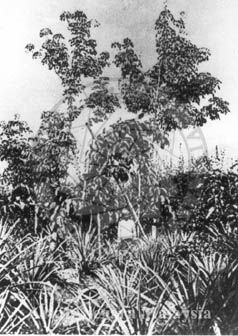
(Source: Arkib Negara Malaysia)
The first ever rubber tree (Hevea brasiliensis) in Malaya was planted at Government Hill, Kuala Kangsar in 1877. It was one of nine seedlings brought over from Brazil by the English botanist H.N. Ridley in 1877. This photo was taken circa 1880. The tree still stands today near the Kuala Kangsar District Office. (Sembang Kuala)
In early 1903 William returned briefly to Scotland after the death of his father at Longmorn on 5th October 1902. He had to leave a friend with power of attorney to finalize another deal in Perak for a stretch of the Kinta River for tin-dredging.
Judging from the inventory of William senior’s assets there would be no funds for William junior to inherit but he seems to have managed to organise a very advantageous marriage instead to Agnes William Smith.
Agnes
There is, indeed, a mystery about how Agnes and William got to know each other, let alone how they were prepared to set out on married life within a couple of months of meeting. Her family had come from Kirkcudbrightshire not Morayshire and had worked in Lancashire and lived in Cheshire.

Rose Mount, the house where Agnes William Smith was born in Merseyside. Her family were highly successful cotton merchants who worked with the Gladstones.
The house had previously been occupied by George Grant, the son of the minister at Cawdor, who had become a cotton merchant also working with the Smiths and Gladstones.
This connection could hardly have brought Agnes and William together because of the generation gap but it is an indication of how intertwined the whole Scottish merchant world was.
Agnes was actually living in London's Kensington Gardens Square when they were married in St Mary’s Church Paddington on the 25th March 1903.
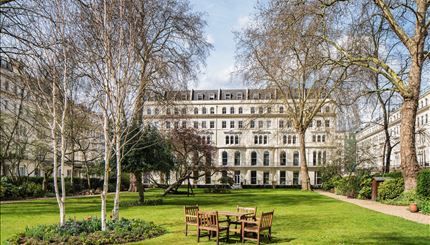
The impressive home of Agnes William Smith at the time of her marriage was at 3, Keningston Gardens Square. William Kellie Smith must have thought he had truly won fortune's favour.
The twenty-five year old Agnes stood to inherit a considerable fortune from her family though it remained in trust which was to prove a serious problem for the impatient newly-weds.
Perhaps one clue about their meeting might be found in the final witness signature to the marriage register entry which was that of Samuel Smith.
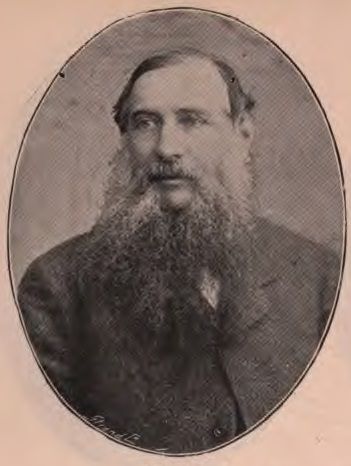
Samuel Smith (1836-1906) merits an entry in the DNB and came from a strongly religious as well as commercial background. He had just published My Life Work in 1902 which William could well have read. As a Liberal MP Samuel Smith worked tirelessly to promote temperance and also better working conditions both in Britain and India. He had travelled widely on business. His visits to India had created a deep concern for Indian working people. It is possible that either he or one of his agents also visited Malaya at some point looking to extend their markets. At present there is no proof of any meeting between the two Smiths there, though.
"Sammy" was seen as rather a kill joy and an anomaly by his political opponents and by some more liberal Liberals too and was visually lampooned in the papers. Nevertheless he wanted not only to make money but to make money work for the workers who were creating his wealth.
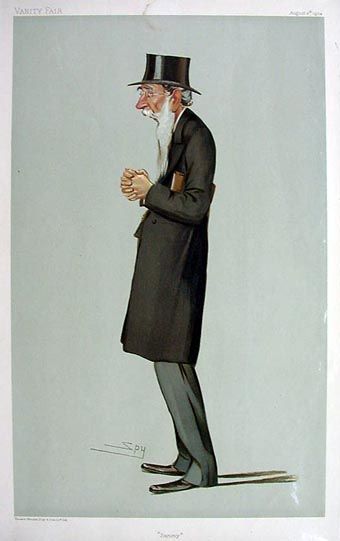
Samuel Smith as he was depicted in the magazine Vanity Fair towards the end of his life.
Samuel was, by the time of this marriage, close to death whilst Agnes’s father, Anthony Gordon Smith, had already died in 1898 aged only 48.
Whatever the faults of William Kellie-Smith (which is how he now signed the marriage register) he must have had distinct charm and self-belief to have formed this ambitious partnership. Agnes was no pawn but was to prove a valuable woman of substance in other ways as well as financially.
The Perak Pioneer reported:
“Mr and Mrs William Smith are expected to take up their residence at ‘Kellas’ as Messrs Osborne and Chappel who are living there have returned to Batu Gajah. They are going to occupy Mr Bryant’s house till their own house which is 3 miles from Batu Gajah, on the Gopeng Road is completed”.
A daughter, Helen Agnes Kellie Smith, was born to them in early 1904 in Singapore whilst they were there to negotiate a loan on the strength of Agnes's expected inheritance.
The loan was for $24,000 a year for three years with a Singapore firm.
William used it at once to build a new wing for their bungalow in brick for Agnes's comfort in a tropical climate. It cost $8,500. Then he built a patchouli and lemongrass distillery costing $20,000 which never operated as planned though there was a great demand for the perfume. He added sawmill machinery costing $1,500 and applied for a licence to extract and sell timber on his estate. He also wanted to extend his rubber plantation and so imported a further 200 coolies. He then needed to build roads, fences, bridges etc.
He was falling into the same trap as many of the Scottish lairds during "improvement", that is, spending borrowed money on expansion and conspicuous display rather than slowly creating capital for further investment. He complained of being chronically short of funds. He also ran into blocks from the government who began to suspect, rightly, that he would never follow through on his many projected often well-intentioned schemes.
The Kellie Smiths lived in high colonial style, however.
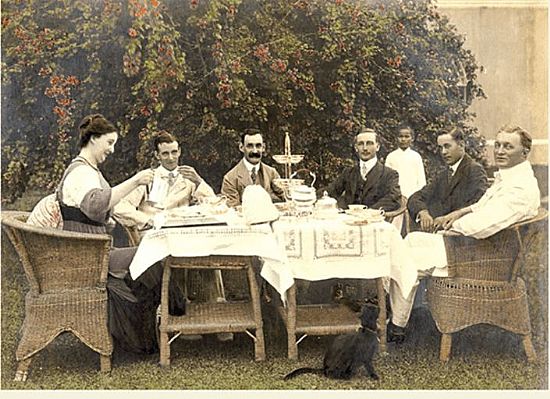
Tiffin in the garden after what was presumably a business meeting. Agnes seems happy as hostess with William in white at the other end of the table. Charles Baker is almost certainly the third man from the right.
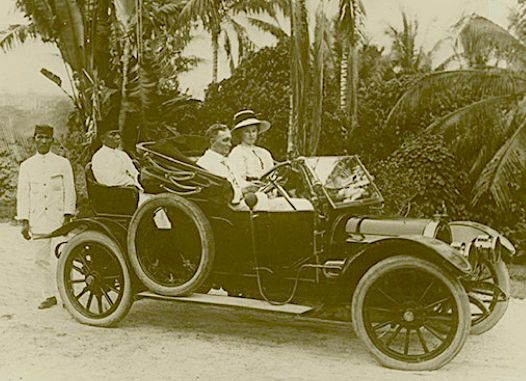
Like Mackie, William was the proud owner of a number of cars. The two syces would normally be the chauffeurs.

The interior of the Kellie bungalow shows the usual late Victorian thirst for collecting and displaying "curious" objects.
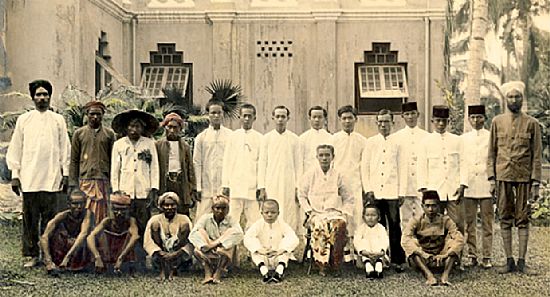
Servants were an obvious sign of social prestige especially when they could demonstrate a definite hierarchy in dress codes as here. The photo is also a reminder of the racial mix there was and is in Malaysia. Anthony seems to be in the care of the seated governess but the little girl must be her own child. She cannot be Helen who was 12 years older than Anthony.
1904 also saw the creation of Smith &Co, a company declaring very wide capabilities and ambitions.
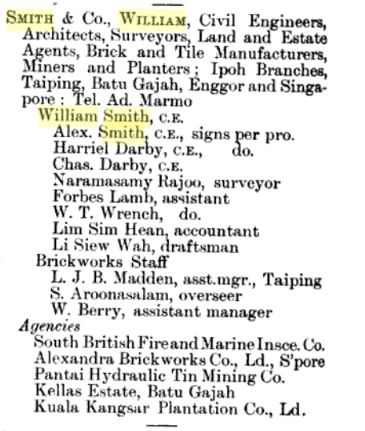
Alexander should be Agnes and Harriel is Harriet the first wife of Charles Darby. Harriet must have died not long afterwards and Charles Darby probably lost money rather than making it from the company because he went off to Nigeria where he served with the Lagos volunteers. He remarried in Billericay the following year and returned to Malaya and the couple became successful planters but not through working with the Kellie Smiths.
When Agnes's legacy payment was delayed the Singapore Company refused to extend the full loan, offering only $10,000 even though Agnes put up a spirited correspondence for more. So the major part of the Kellas Estate had to be sold in 1906 to Harrisons and Crossfield though William was kept on as Managing Director. Agnes, herself, retained only 538 acres which became known as "The Old Kellas Estate".
Yet, it was at this low point that William Kellie Smith decided to make the ultimate wealth statement and build a house for Agnes that was to be more resplendent than the residency in Taiping. Kellie’s Castle was begun.
In the meantime William continued to try to persuade the government and others of the validity of his schemes but with little success.
Dr Ho sums up the opportunities William lost through wrong investment of the funds that Agnes had inherited.
“When he [William] married Agnes in 1903 the world was at his feet, given the opportunities that were available in British Malaya for a European with so much money to invest at the start of the new century. The Kellie Smiths maintained a standard of living that even the Alma Bakers could not match. They entertained regularly at their beautiful mansion, which was without doubt the grandest in Batu Gajah. They took home leave to Britain frequently. He had four of the latest models of motor cars which were kept in a large and ornate garage near the house. The syeos who drove the cars were smartly uniformed. So were the servants. There were governesses for the children, Helen and Anthony. To maintain the life style Kellie Smith, of course, had to invest his money. However, there was an impetuosity about him that made his investments decidedly risky” p150 Generations: The Story of Batu Gajah: Min Tak Ho
Perhaps one of the occasions of “home leave” was for the marriage of his sister Ella in July 1910 to a Dundonian born chemist, David Peebles, then working in Corstorphine, Edinburgh.
It is likely that it was also at this time that the little six or seven year old Helen was placed in a school in Ealing.
The 1911 census shows her staying as a boarder with a Mrs Florence Eileen Kimber who had been born in India. Also in the same house were a mother visiting her 18 year-old daughter who had been born in West Africa and two other girl students aged seventeen and eighteen. One had been born in “Chilli, Osams” (unidentified. ?Chili in the Solomon Islands) and the other one in Stockholm. It was a very international little community but not a “home’ for a small girl in a town so close to the capital of the then British Empire. There were a number of good private girls schools in Ealing at the time but Girton House Girls’ School may well have been the choice. The enumerator understood that Helen had been born in Hong Kong or at least it is what he wrote on the return.
That same census registered a small boy in Eastbourne aged nine from Bath called Lewis William Eric Richards who would eventually become Helen's husband. He was a pupil at a remarkable boys' prep school, St Cyprian’s, which educated a very wide range of talented men including Eric Arthur Blair better known as George Orwell.
With the outbreak of war in 1914 The Kinta Kellas Company was left in suspended animation. It was at the end of that year that William’s mother died whilst staying with her daughter and son-in law in Edinburgh.
Perhaps another trip to Scotland at that time by the Smiths also allowed them to take Helen back home to Malaya with them but so far there is no direct evidence for this. Nor is there evidence that she had been with her parents on their first visit to Tasmania when her brother, Anthony William (named for his two grandfathers) was born at Winmarleigh, Hobart on the 14th February 1916, according to a notice in The Mercury, Hobart Tasmania 16th Feb 1916
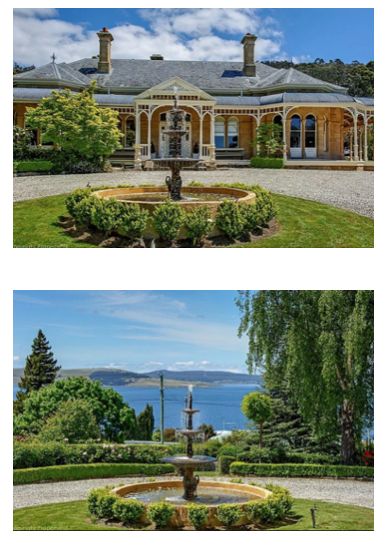
The understated but distinguished comfort of Winmarleigh from the outside. An idyllic place for a holiday or to give birth indeed.
1918 brought the complication of the Spanish flu epidemic and once more the Kellie-Smiths undertook a voyage to Tasmania via Honolulu on the SS Santa Cruz. This time Helen was listed amongst the passengers.
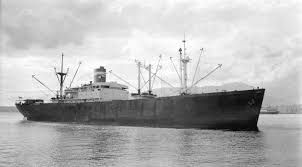
SS Santa Cruz
U.S. regulations demanded detailed descriptions of passengers docking at their ports, so we have a very good picture of the family as a result.
29th May 1918. SS Santa Cruz sailed from Penang destined for New Zealand. On board were:-
SMITH, William Kellie 48, married, landowner, able to read and write, nationality: British, Race: Scotch, last country Malay States, Batu Gajah, contact there "a friend" the Hon Mr John Mitchell, Penang.
SMITH, Agnes William Kellie 40 wife;
SMITH Helen Agnes Kellie 14 child
SMITH, Anthony William 2;
O”REILLY May, 30, Governess, Irish
WALL, Eleanor Mary 32, Nurse, English.
All passengers' fares were paid by W. Kellie Smith who also carried with him more than $50 cash. He had been before to the US (i.e. Honolulu) in 1912, touring. He was not going this time to a relative or friend but was also touring.
William was 5’10 ½ with ruddy complexion, grey hair, brown eyes, and was born in Scotland, Morayshire
Agnes 5’ 9 ½ with pale complexion, brown hair, brown eyes b England, Cheshire
Helen 5’ pale complexion fair hair brown eyes b Straits Settlement, Singapore
Anthony 2’5” pale complexion fair haired b Tasmania, Hobart
Governess 5’1” pale complexion, dk brown hair grey eyes b Ireland
Nurse 5’4” pale complexion dk brown hair b England, London
Were they once more heading for Winmarleigh? If so the children must have been deeply impressed not only by the pretty exterior but also the interior that speaks so confidently of imperial power.
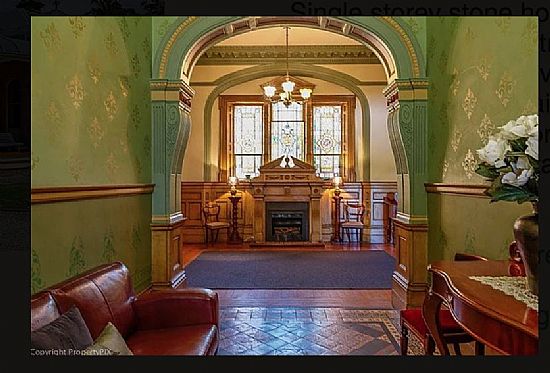
The entrance hall to Winmarleigh
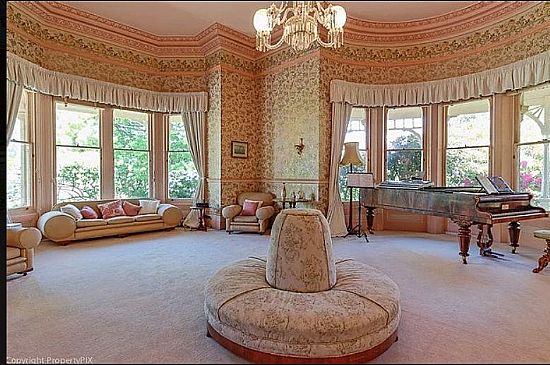
The enormous drawing room that could so easily become a ballroom. All photographs of Winmarleigh are by PropertyPIX
The 1918 flu epidemic cost 6,050 lives in Penang alone and the losses amongst the Tamil builders and plasterers at the Kellas mansion were so heavy they asked to build a Temple. This diverted their activities and delayed progress on Agnes’s grand home but placed William in military uniform up with the gods in thanksgiving on the roof of the Temple.
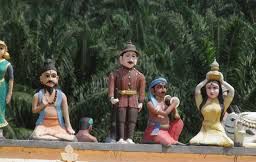
A very "British" military-looking William Kellie was placed on the roof with the benign gods.
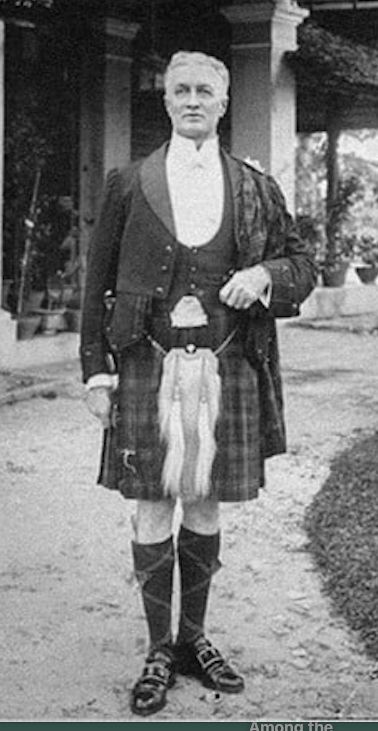
Kellie Smith here proudly displaying a very "Scottish" kilted dignity.
Wisely William wrote his will at this time but he and his family all came through safely.
The flu epidemic mercifully weakened round the world.
More problems hit the Old Kellas Estate because of the fall in rubber prices in 1921 but William was still dreaming of further grand schemes for investing.
In June 1925 he took Helen on an exciting trip to the Cameron Highlands envisioning both plantations and some residential accommodation. He had rightly foreseen the potential for a health resort with Helen as manager but was being canny rather than divulging his real intentions and suggested only agricultural devlopments. The Land Department’s own surveyors thought such limited developments would not be profitable and they refused their permission.
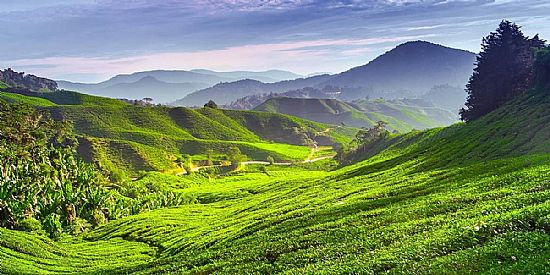
Ironically this could have been William Kellie Smith's real legacy to Malaysia because his dream of both agricultural and tourist development has become a reality today.
William had been so sure that his plan would be accepted that he had ordered in advance coffee and citrus seedlings. With his plans rejected he had to give away the coffee seedlings and create “the only citrus grove in a rubber plantation” at Old Kellas.
In 1926 he was heading for England to visit Anthony who was at school there accompanied by Agnes. He also intended to collect a lift for his mansion and to finalise a lease for land in Timor whilst in Portugal. However during his stay in a hotel in Lisbon he caught pneumonia.
He died in Lisbon on 11 December 1928. As a result, instead of being buried in a stately family vault on his own estate, he was buried in the English cemetery in Lisbon.
Agnes wisely cut her losses, sold up in Malaya, returned to Britain and saw her two children well settled into “good” families before she died, cared for by Helen and Lewis in Walton Thames, in 1960.
Anthony married into the distinguished Chaytor family from Croft in North Yorkshire and they had one son David Anthony Kellie-Smith b 1940 not long before his father was killed in WW11. David Anthony went on to have two sons Samuel Anthony Kellie-Smith and Owen William Kellie-Smith.
Helen and Lewis Richards had two daughters. Susan A.K. Richards early in 1938 at Windsor and Frances H. Richards born between July and September 1941 at Walton on Thames.
Frances must have married a Boston (at present untraced) as this is the name she gave when donating the photos and her mother's notebook of the trip to the Cameron Highlands to the Castle during her visit.
What might the Castle have looked like on completion?
One person's idea is shown here anyway.
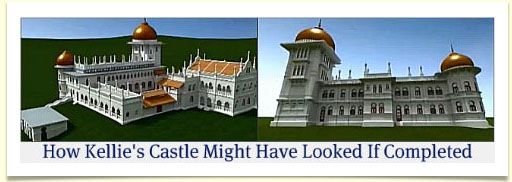
The section that looks like a castle chapel was actually the original Kellie "mansion" though not completed to this level.
What dreams did they have for the rest of the property? Tennis courts. A swimming pool would no doubt be added today and gymnasium.
We can all dream as we look at the incomplete buildings which is one reason why it is so attractive to visitors.
The ghosts said to haunt the castle must also have many more stories to tell.
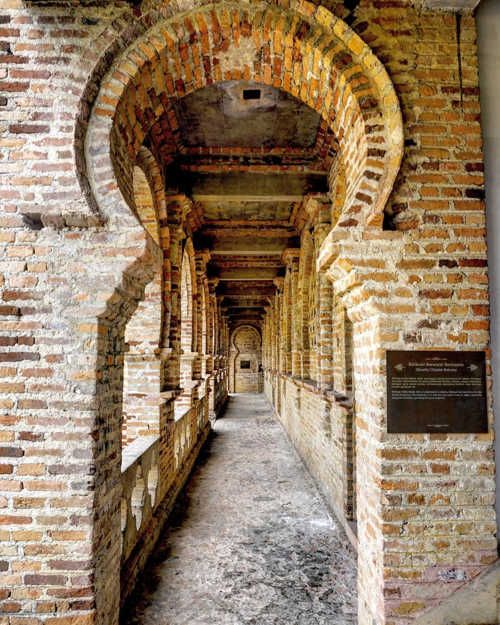
Acknowledgements:
I am grateful to Maria J. Dass and her blog "Maria Dass the World" for introducing me to the life of William Kellie Smith and to Ho Tak Ming's book Generations: The Story of Batu Gajah. Also to Margaret Doughterty for help with newspaper citations and some genealogy. To Ruth McIntosh of the "Moray Burial Ground Research Group" I am indebted for some monumental inscriptions. The display board photographs are used courtesy of William Harrald-Wong Associates.
The Peter May Papers can be accessed on line. The introduction to them by Ian H Adams is extremely helpful for an understanding of the numerous surveyors who went from this part of Scotland out to all the colonies.
The Harrison and Crossfield Papers for the Kinta Kellas Estate are in the London Metropolitan Archives and the online catalogue can be found at http://search.ima.gov.uk/opac_ima/index.htm

